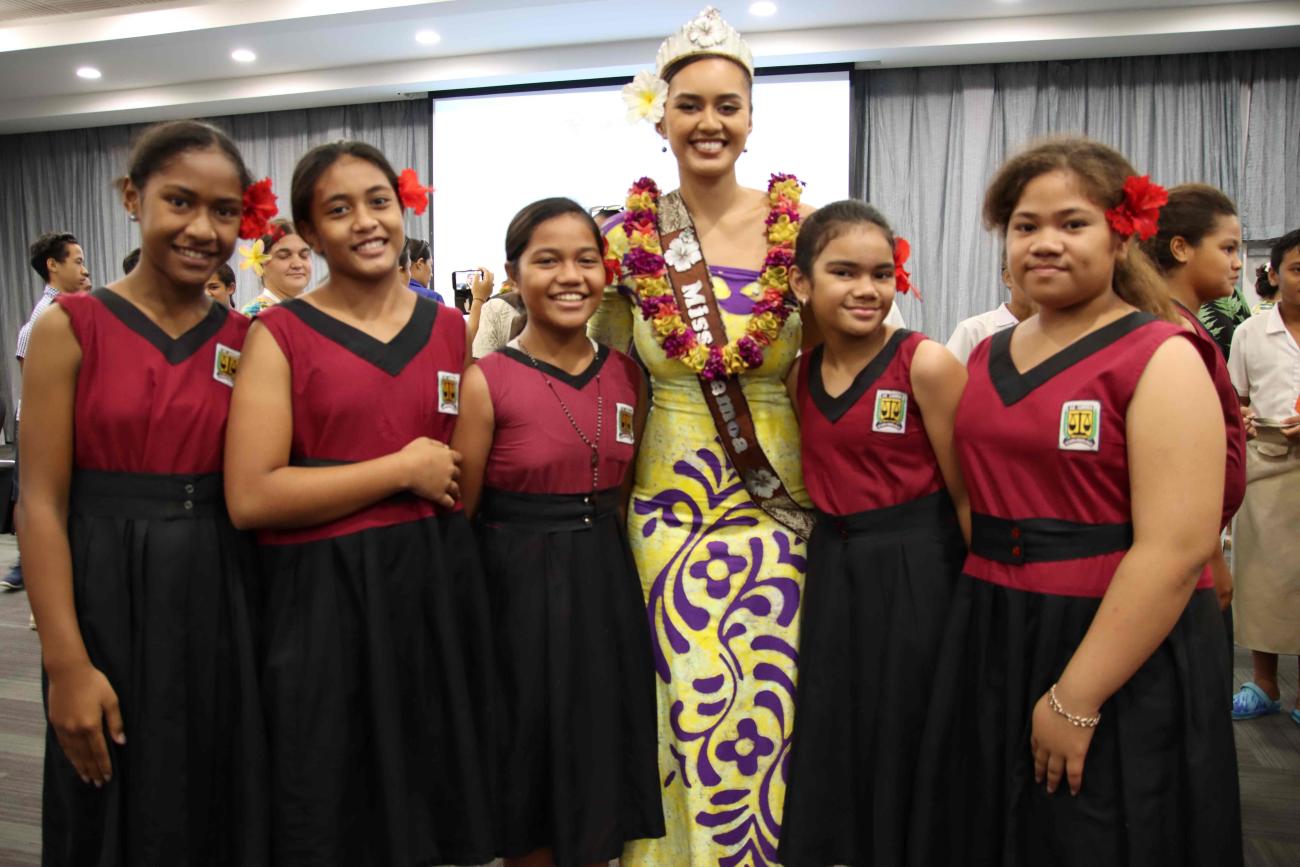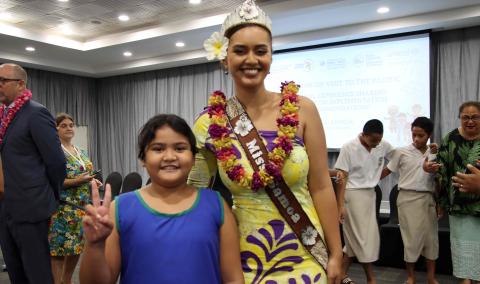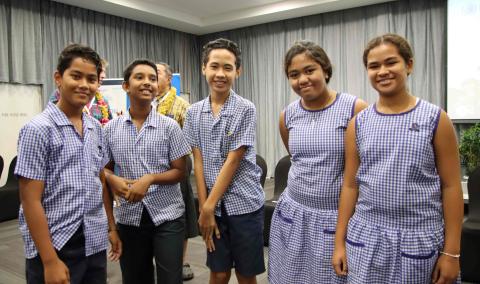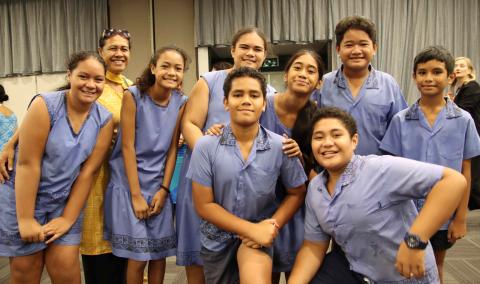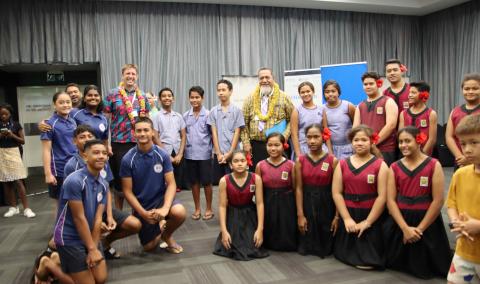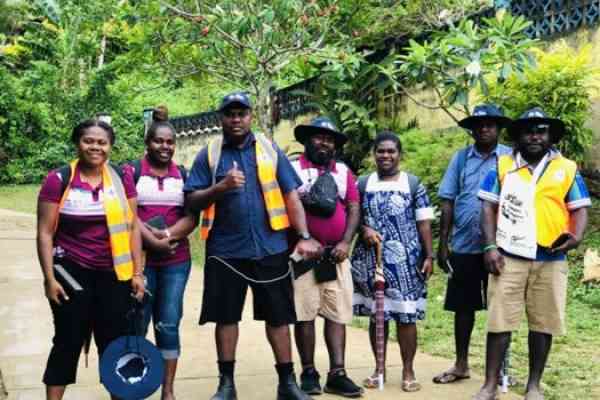This press release was originally written and shared by UNICEF.
(contenu disponible en anglais uniquement)
UN Child Rights Committee meets with Pacific children and governments to share new guidance on children and environment

On the occasion of World Children’s Day, the UN Committee on the Rights of the Child launched its new guidance on children’s rights and the environment with a special focus on climate change, together with children and representatives of Pacific Island Countries. Known as General Comment No. 26 (GC26), the guidance explicitly addresses the climate emergency and the related obligations of States to protect the lives and wellbeing of children under the UN Convention on the Rights of the Child.
Speaking at the launch was 12-year-old Kyannalei Ah Liki, who shared the value of the General Comment 26 as she reflected on her personal experiences with natural disasters in Samoa.
“I am still young, and I do not want the effect of climate change to ruin my childhood. We can never solve the problem of the impacts of climate change. However, we can take action to minimize the impact of climate change,” said Kyannalei in her opening remarks.
In the Pacific, climate hazards and environmental degradation are already altering the health and wellbeing of children. Moreover, children are uniquely and disproportionately vulnerable to pollution, deadly diseases, and extreme weather. Yet children’s rights, unique needs for special protection and investment and their perspectives have often been absent in climate policies, action and investment.
Another child, 11-year-old Semisi Ioane has called policy makers to “make things right”. In sharing his thoughts Semisi said “We need to set things right for children of the future. Don’t do it for us, do it for them so that our children can have as the title said - a clean, happy, healthy and safe environment for them to live in.”
This now changes with the launch of the GC26 which took place this morning in Apia, at the Regional Experience sharing workshop on implementing the recommendations of the UN Committee.
Speaking to a room full of children at the launch, the Chair of the UN Committee on the Rights of the Child Ms Ann Skelton emphasized the importance of ensuring children’s voices are included when forming climate related policies. In her address, Ms Skelton reminded stakeholders that children will be on this planet longer than adults and therefore any action must consider their future.
“General Comment 26 conveys the message to the states, business and to all of us that we must find shared solutions because we all live on this planet and there is only one planet earth,” said Ms Skelton. “I am very delighted that we are here where the reality of climate change is real and therefore it is significant and meaningful that we launch GC26 in the Pacific on World Children’s Day.”
The need for clear action on child rights and the climate crisis is further strengthen by the comprehensive guidance for states to act, as clarified by United Nations Committee on the Rights of the Child ‘General Comment No. 26 (2023) on Children’s Rights and the Environment with a Special Focus on Climate Change’. Leaders are therefore encouraged to ensure child rights are prominent in COP28 outcomes so that the rights and needs of children are respected, promoted and considered in all aspects of climate action, in line with Paris Agreement commitments.
Children’s health and wellbeing are threatened by climate change, diseases, air pollution and extreme weather events. In addition, the scarcity of drinking water adds layers to their vulnerability.
General Comment No. 26 assists in interpreting States’ commitments under the Convention on the Rights of the Child to respect, protect and fulfil their child rights obligations when taking action to address climate change and environmental degradation. It also makes it clear that child rights impact assessments must be undertaken for all environment-related legislation, policies and projects, regulations, budget or other decisions. States will be expected to report periodically to the UN Committee on relevant progress they have made in protecting children’s environmental rights.
About UNICEF:
UNICEF works in some of the world’s toughest places, to reach the world’s most disadvantaged children. Across 190 countries and territories, we work for every child, everywhere, to build a better world for everyone. For more information about UNICEF Pacific and its work for children, follow UNICEF Pacific on Twitter and Facebook.
About UNOHCHR
The Office of the High Commissioner for Human Rights (OHCHR) is the leading United Nations entity on human rights. Established by the UN General Assembly in December 1993 through its resolution 48/141, the mandate of the OHCHR includes promotion and protection of human rights for all. OHCHR Pacific Regional Office, based in Fiji, covers 16 countries in the Pacific. For more information on OHCHR Pacific Regional Office, visit the OHCHR website. Follow OHCHR Pacific Regional Office on Twitter and Facebook.
